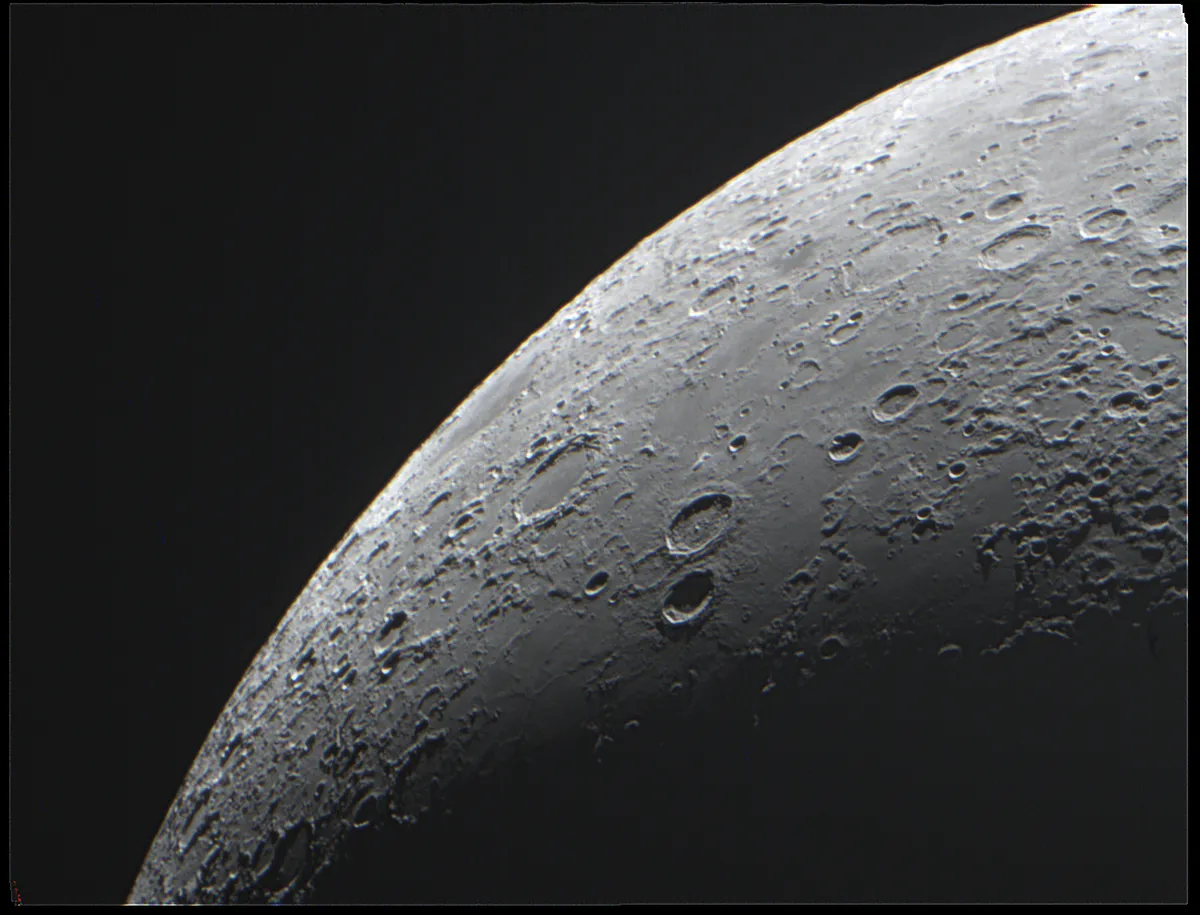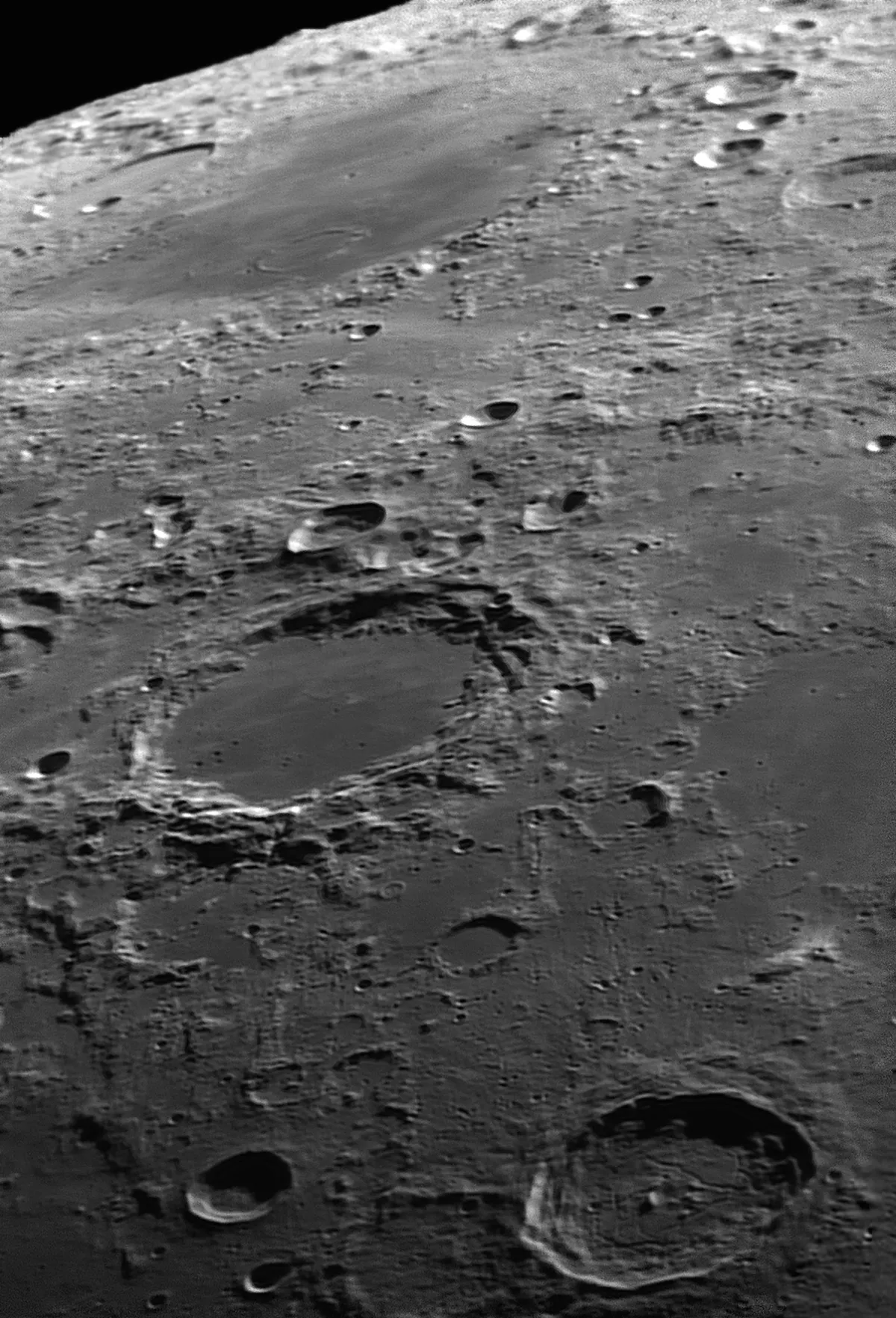Endymion is an impressive walled plain located close to the Moon’s northeast limb.
As a consequence, the crater appears foreshortened from Earth and is subject to the effects of lunar libration – a rocking and rolling action stemming from the fact that the Moon’s orbit is tilted and elliptical.
A favourable libration will bring Endymion closer to the Moon’s centre and as it does so, 260km Mare Humboldtianum also rotates into view, visible between Endymion and the Moon’s limb.
For more info on lunar observing, read our guides on how to observe the Moon and the best features on the Moon.

When the libration is unfavourable and Endymion is close to the lunar limb, it may appear separated from the limb by an amount equal to the crater’s narrowest apparent dimension.
At a favourable libration, Endymion’s eastern rim appears separated from the Moon’s limb by 2.5x the crater’s longest apparent dimension – a notable variation.
Facts about Endymion Crater
- Size: 126km
- Longitude/Latitude: 56.5˚ E, 53.6˚ N
- Age: Older than 3.9 billion years
- Best time to see: Three days after new Moon (14–15 Feb) and two days after full Moon (30 Jan & 28 Feb)
- Minimum observing equipment: 10x binoculars

Endymion is 4km deep with isolated peaks on the eastern rim rising as high as 4.6km.
Its location means that the crater is best viewed during the early lunar phases or after full Moon. As ever, most detail appears when sunlight hits the crater obliquely.
Endymion’s rim consists of a series of complex terraces leading down to a smooth, virtually featureless floor.
With care, it’s possible to see variation in the tonal appearance of this floor; lighter streaks running north to south are the most obvious features here.
The completely smooth appearance of Endymion’s floor is broken at high resolution.
There’s a curious line of three craterlets towards the north of the crater, the northernmost two being 3km in diameter, the southern one slightly smaller at 2.7km.
A further depression sits west of the middle craterlet but this isn’t as deep as the main trio. These features stand as a good test for a 200mm instrument or high-resolution imaging setup.

Endymion’s unnamed crater
If you fancy another observing challenge, there’s an interesting unnamed ancient crater, 121km southwest of Endymion’s centre.
To locate it, use the narrow dimension of the crater as a ruler and imagine where the western rim would appear if you slid the crater towards the Moon’s centre, so that the eastern rim would end up where the current crater’s centre lies.
If you can follow this admittedly convoluted description, the displaced western rim overlays the unnamed feature, a 6.5km shallow crater with a perfectly aligned inner ring that’s 2.8km in diameter.
This unusual concentric crater lies 26.5km to the northwest of 7km Endymion K.
Located immediately east of Endymion is Endymion A, a well-defined 30km-crater itself, showing lots of internal structure.
The same can be said of 60km Endymion B although this feature lies a fair distance further to the northeast, 182km centre-to-centre from Endymion A.
North of Endymion is 136km De La Rue, an ancient and rather battered feature. Between the pair lies 15km Endymion G.
This small crater sits on the western edge of a large unnamed lava plain.
The northern, western and eastern borders of this plain appear like a rough crater rim, leading to the speculation that this is actually a highly eroded ancient crater.
